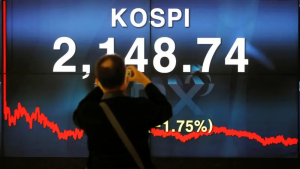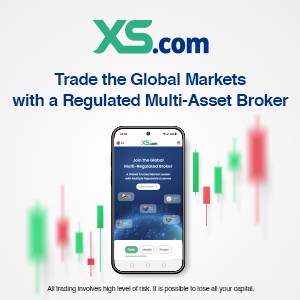A rare instance of euro zone economic outperformance against the once-unstoppable U.S. powerhouse may be more than just a flash in the pan, even if it was flattered by trade distortions. First-quarter economic reports from both economies were released on Wednesday, and comparable annualized growth rates show the euro bloc outstripping the contracting American economy by almost two percentage points over the three months. The Reuters Tariff Watch newsletter is your daily guide to the latest global trade and tariff news. Sign up here. It's the first time in three years that euro zone growth has nosed ahead of America - and only the fifth quarter of 40 over the past decade when euro growth rates exceeded those in the United States by more than one percentage point. Euro zone economy outstrips US for first time in three years Whether the outperformance can last is the big question as distortions related to President Donald Trump's trade war, which saw a furious front-loading of U.S. imports to beat last month's sweeping tariff hikes, exaggerated the readout stateside. Shows trade effect on GDP Europe was lifted partly by a jump in exports that fueled the U.S. stockpiling. But European confidence has also been lifted by Germany's extraordinary trillion euro fiscal plans and by ongoing borrowing interest rate cuts from the European Central Bank. The unfolding picture was matched in financial markets. European stocks outperformed falling Wall Street equities (.SPX), opens new tab by the most in 25 years during the first quarter, and the euro's near 10% surge on the dollar marked its best three months in more than two years and the best first quarter in nine years. A month into the second quarter and markets so far have given little or nothing of those relative moves back. BOUNCEBACK OR STALL? Even though some of the trade-related dynamics crimping U.S. GDP may ease off this quarter as April's tariffs were announced and some implemented, the problem stems from an inability of businesses and consumers to see the end point. No one's full sure whether to brace for possible further escalation and retaliation, or for pauses and suspensions - or indeed ebbs and flows in multiple closed-door negotiations. So how worrying a sign is that?
The uncertainty related to Trump's 90-day pause of so-called "reciprocal tariffs" is set to last through the current quarter - begging the question whether precautionary import stockpiling may persist through to midyear if those higher levies are indeed to come. So while GDP trackers, opens new tab are already suggesting some bounceback in growth this quarter, there's little confidence these hold from data point to data point. U.S. consumption appeared to hold up in Q1 despite the heavy weight of net trade calculations. But there's a risk the first wave of tariff hikes are hitting household demand hard, and early April survey readings already show consumer confidence plunging to five-year lows. GDP contributors On the euro side, trade tensions will also be a risk, but the fiscal and monetary easing may well act as a growing tail wind - with ECB easing in full swing even as the Federal Reserve has stalled on worries that tariffs could rekindle inflation expectations. What's more, Germany's outsize trade exposure masks the better performance of other euro economies such as Spain or even Italy.
Of course, one unusual quarter can't yet be assumed as a new trend. As Morningstar Wealth's chief strategist Dominic Pappalardo noted: "Economic data remains wildly unpredictable given the elevated uncertainty around tariffs and other policies." MIND THE GAP Take a step back a bit and the most recent global forecasts still see faster U.S. growth for the full year - even if visibility at this stage is shot to bits. The International Monetary Fund's, opens new tab central forecast last week was for a full year U.S. expansion of 1.8% - still a full point higher than the euro zone. IMF chart on latest GDP forecasts for this year and next But that was before Wednesday's Q1 readouts and the IMF sees the gap between the two next year - when the German fiscal boost starts to kick in in earnest - narrowing to just half a percentage point. IMF chart on latest global forecast changes But for investors, one thing may endure from the first quarter for much longer. Apart from hazardous GDP forecasting, the uncertainty about the direction of U.S. economic policy and Washington's engagement with the rest of the world - and a presumed government bias toward a lower dollar exchange rate - will continue to encourage a rethink of transatlantic positioning. Simple relative value plays now encourage that and this historically peculiar growth fillip adds jam on top. The opinions expressed here are those of the author, a columnist for Reuters











